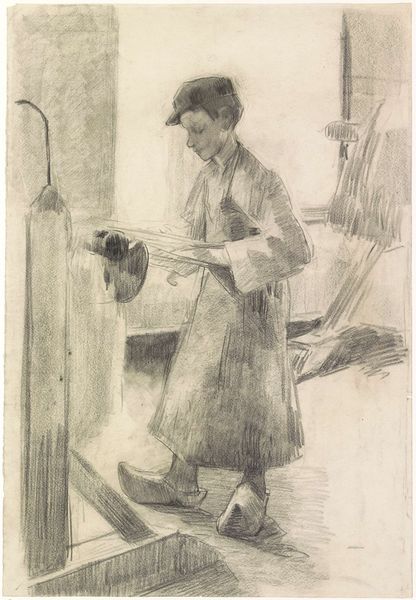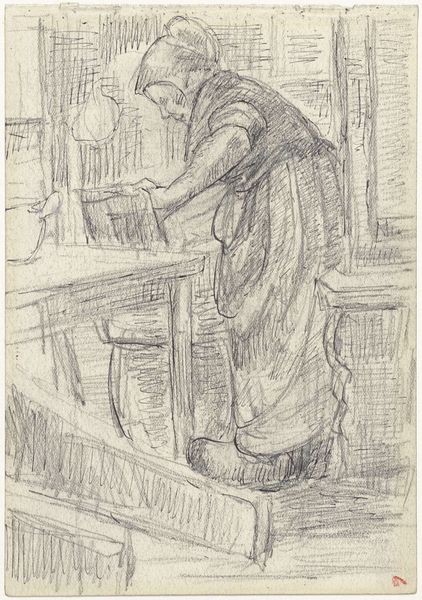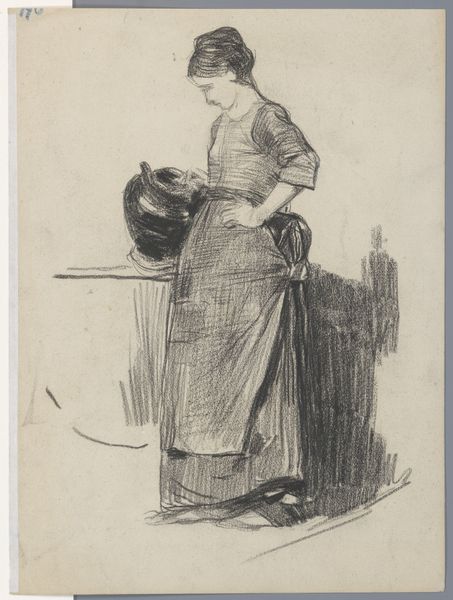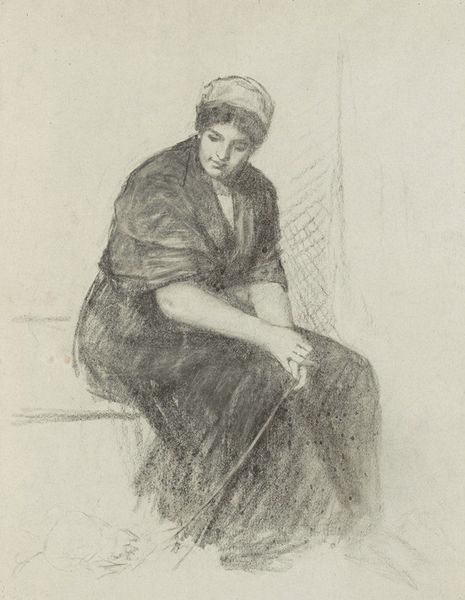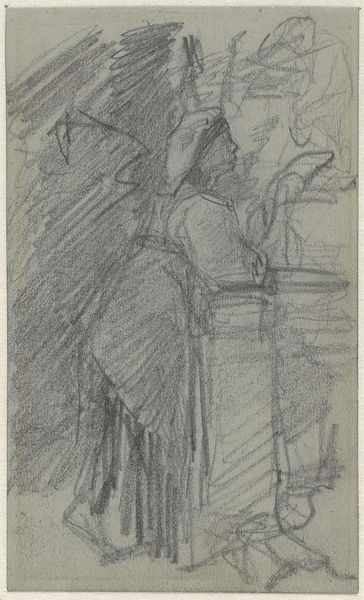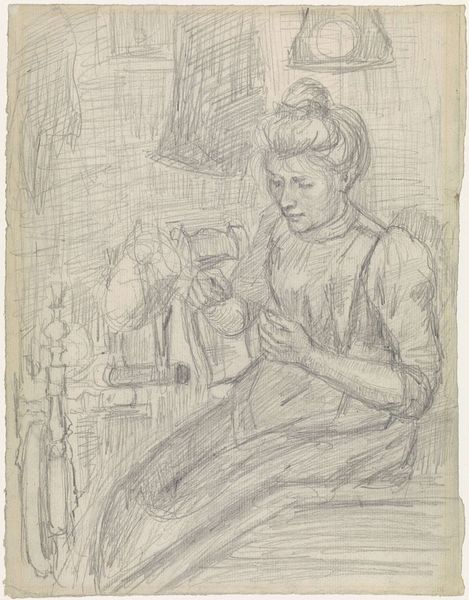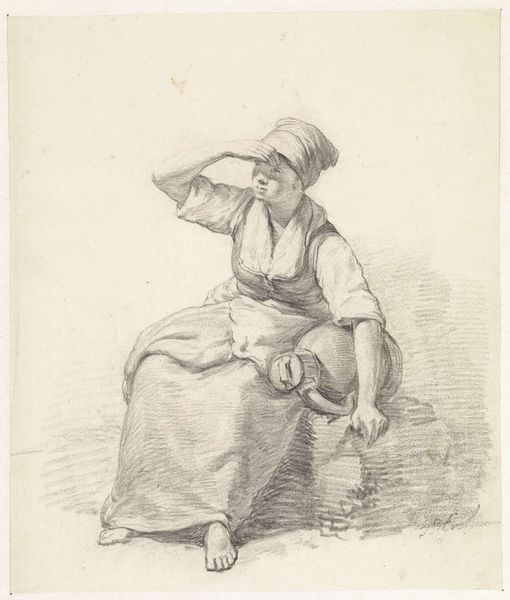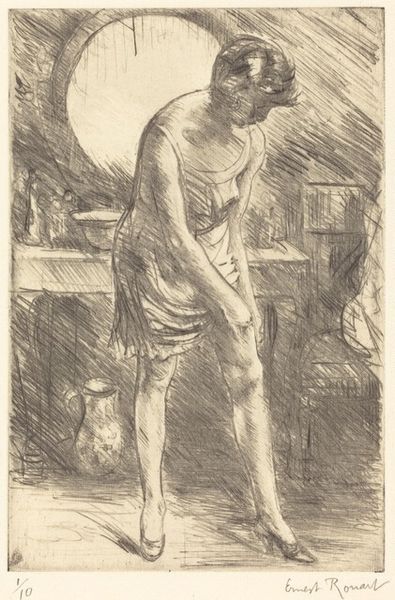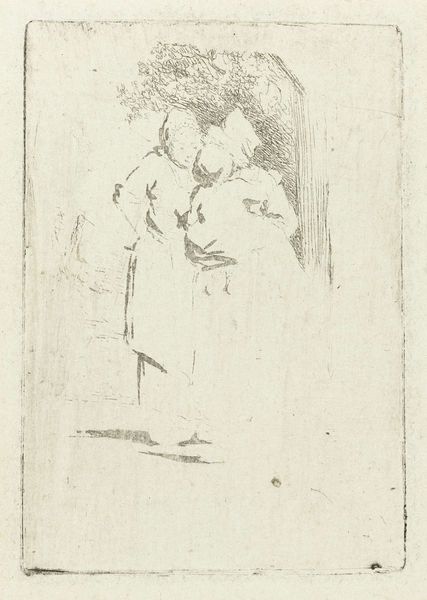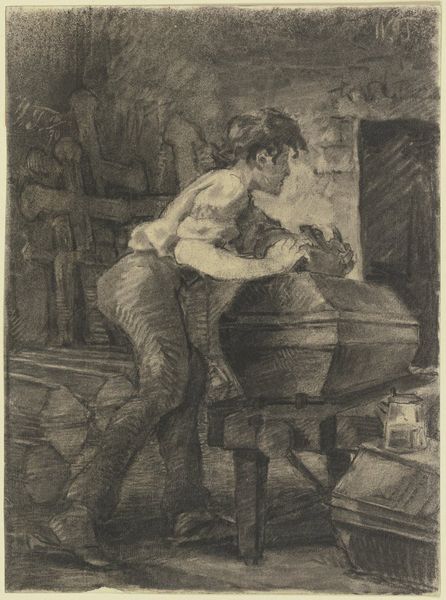
drawing, pencil, graphite
#
portrait
#
pencil drawn
#
drawing
#
pencil sketch
#
charcoal drawing
#
pencil drawing
#
pencil
#
graphite
#
genre-painting
#
realism
Dimensions: height 320 mm, width 229 mm
Copyright: Rijks Museum: Open Domain
Curator: This is Anthon Gerhard Alexander van Rappard's "Fabrieksjongen aan het werk," placing us somewhere between 1868 and 1892. It appears to be a work rendered in pencil and graphite. Editor: My first impression is of a melancholic air, perhaps enhanced by the monochromatic pencil. There's a strong sense of introspection about the figure. Curator: The artwork undeniably acts as a document of its era. We see industrialisation depicted through the youthful factory worker; it highlights labor, the lives of the working classes, and how such institutions impacted the young. Note how the very act of depicting a factory worker, rather than a noble or wealthy person, in this way signifies an engagement with Realism as a movement. Editor: Absolutely. It serves as a study in the material realities of the time. It also prompts me to consider where this drawing fits within the larger art market. What was the perceived value of portraying laborers like this? Did it serve as social commentary, or merely documentation? Curator: Rappard and his peers contributed to shaping how the poor, laborers, and rural populations would be visualized, perceived, and subsequently, politicized in Dutch society. I also note the visible construction of the pencil strokes. They almost feel hurried in their application. What material constraints or limitations influenced Rappard's final marks here? Editor: I agree. You can see the artist wrestling with the medium to quickly capture a sense of both character and the boy’s surrounding environment, making tangible his labour as well. It would be interesting to contextualise the origin of the artwork in relation to broader patterns in genre paintings as well as societal attitudes. Were images like this meant to encourage empathy, or to other and marginalize? Curator: Right, the artwork exists within, and actively participates in, that sociopolitical moment. I see that this has further encouraged me to consider both the social framework which shaped the imagery in the late 19th Century and the artmaking material choices deployed by van Rappard here. Editor: This brief contemplation makes clear how art historical interpretations rely on interrogating historical moments through art's material manifestations. Thank you for the insights.
Comments
No comments
Be the first to comment and join the conversation on the ultimate creative platform.
